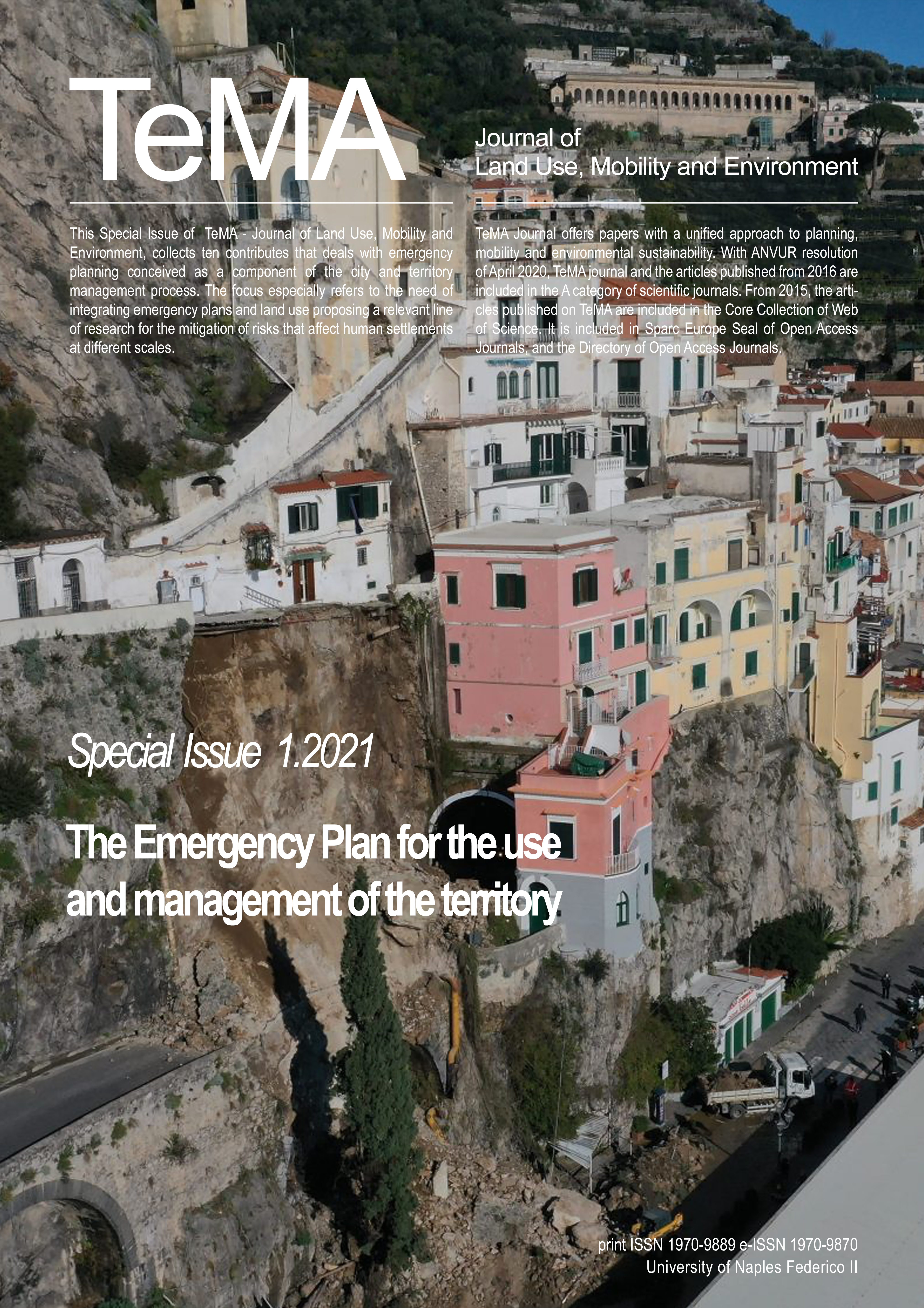Planning to prevent disasters
Abstract
The evolution of cities, whose pattern is all but regular, is sometimes marked by rare events that may disrupt the normal development. Throughout history, cities grow and shrink, flourish and perish, in a slow and somehow predictable way, but sometimes they suffer sudden and unexpected changes. Those breakages that profoundly modify their urban schemes and land-uses, their identity and their economic and social activities, transform them into entirely new cities or radically convert large portion of space.
Whatever the outcome of a disaster could be, although it may result in a pattern of positive development, we must prevent the loss of human lives, the suffering, the loss and damages that accompanies every catastrophe. The main task of human action must therefore be risk mitigation, bearing in mind that risk is always present and the resources to mitigate it are often scarce.
Without going into the detail of any particular event and with methodological intent, the paper will try to investigate how we can better understand risk and how planning may influence the mitigation of risk.
Downloads
References
Angiello, G., Carpentieri, G., Morosini, R., Tremiterra, M. R., & Tulisi, A. (2018). Review Pages: The Resilience City/The Fragile City. Methods, Tools and Best Practices 3 (2018). TeMA - Journal of Land Use, Mobility and Environment, 11(3), 361-382. https://doi.org/10.6092/1970-9870/5957
Barone, C. & Mocetti, S. (2014). Natural disasters, growth and institutions: a tale of two earthquakes. Working papers, n. 949. Banca d’Italia, Rome
Dal Co, F. (2012). Lisbona dalla macerie alla modernità. Corriere.it [12th October 2012]
Dufour, L., & Raymond, H. (1693). Val di Noto. La rinascita dopo il disastro. Domenico Sanfilippo editore, Catania
European Commission (2006). Environmental aspects of urban spread in Europe. Joint Research Centre, European Commission
Galderisi, A. et al. (eds.) (2020) Geografie del rischio. Nuovi paradigmi per il governo del territorio. Donzelli, Roma
ISTAT (2020), Ricerca e sviluppo in italia: anni 2018-2020. Rome
Røstum, J., Novembre, V., & Vatn J. (eds.)(2008). Proactive crisis management of urbran infrastructure, Final report of the COST Action C19, SINTEF Byggforsk (N), ISBN 978-82-536-1003-0, pp. 8-12
Smith, K. (1998). Environmental hazards–assessing risk and reducing disaster, 2nd edn. Routledge, New York
Starr, C. (1969). Social Benefit versus Technological Risk. Science. Vol. 165, Issue 3899, pp. 1232-1238.
Swiss Federal Office for Civil Protection (2008). Conference on civil protection and disaster management.
Tira, M. (1997). Pianificare la città sicura. Edizione Librerie Dedalo, Roma.
Tira, M., Blancher, P., Badiani, B., & Confortini, C. (2008). Setting a safety policy, in: Røstum, J., Novembre, V., & Vatn, J. (eds.) Proactive crisis management of urbran infrastructure. Final report of the COST Action C19, SINTEF Byggforsk (N), ISBN 978-82-536-1003-0, pp. 107-113
Volta, G. (1981). Review of methods for risk analysis. Angewandte Systemanalyse, 2: 158 - 167
Authors who publish in this journal agree to the following:
1. Authors retain the rights to their work and give in to the journal the right of first publication of the work simultaneously licensed under a Creative Commons License - Attribution that allows others to share the work indicating the authorship and the initial publication in this journal.
2. Authors can adhere to other agreements of non-exclusive license for the distribution of the published version of the work (ex. To deposit it in an institutional repository or to publish it in a monography), provided to indicate that the document was first published in this journal.
3. Authors can distribute their work online (ex. In institutional repositories or in their website) prior to and during the submission process, as it can lead to productive exchanges and it can increase the quotations of the published work (See The Effect of Open Access)

